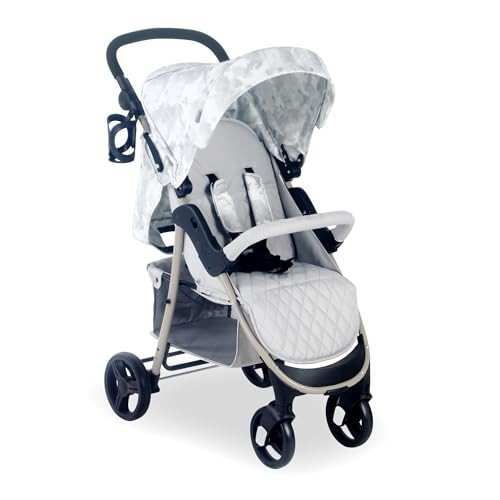Understanding Prams and Pushchairs: A Comprehensive Guide for Parents
When it concerns choosing the best mode of transport for kids, parents are frequently overwhelmed by the range of options readily available. Prams and pushchairs are amongst the most common choices, and each has its own unique functions dealing with different requirements. This short article dives deep into the world of prams and pushchairs, detailing their distinctions, advantages, drawbacks, and tips for selecting the best one for your family.
What is the Difference Between a Pram and a Pushchair?
Initially look, prams and pushchairs may appear comparable, but they serve different functions based upon a kid's age and developmental stage. Below are the primary differences:
| Feature | Pram | Pushchair |
|---|---|---|
| Age Range | Usually for newborns as much as 6 months | Suitable for kids 6 months and older |
| Style | Flat, horizontal lying position for newborns | Upright seating position; more versatile and mobile |
| Use | Primarily for strolling with babies | May include several seating choices and configurations |
| Foldability | Typically bulkier and less portable | Usually lightweight and foldable for simple transport |
Types of Prams and Pushchairs
Picking the right pram or pushchair can depend on numerous aspects, consisting of the type, features, and way of life of the household. Below are the primary kinds of prams and pushchairs readily available in the market:
Prams
- Conventional Prams: Designed for newborns, they often include a deep and comfy bassinet, making them ideal for young infants.
- Travel System Prams: These can transition from a bassinet to a toddler seat, typically including a baby safety seat for ease of travel.
Pushchairs
- Standard Pushchairs: Offer an upright seat and appropriate for older babies and young children. They often include reclining capabilities.
- Umbrella Pushchairs: Lightweight and highly portable, these designs fold compactly, making them perfect for travel.
- All-Terrain Pushchairs: Designed for rugged landscapes, they feature bigger wheels and superior suspension systems for off-road capabilities.
Advantages and Disadvantages
Benefits of Prams
- Comfort for Newborns: Their flat, horizontal style is perfect for the healthy spine development of babies.
- Stylish Designs: Many prams featured stylish looks, interesting fashion-forward parents.
- Roomy: They tend to provide a larger area for babies to move conveniently.
Disadvantages of Prams
- Bulkiness: They can be heavy and tough to maneuver, making them less convenient for public transport or crowded spaces.
- Cost: Prams generally feature a greater price tag compared to pushchairs.
Advantages of Pushchairs
- Mobility: Many pushchairs fold compactly and are light-weight, offering impressive convenience for moms and dads on the go.
- Flexibility: With numerous setups offered, pushchairs can suit numerous stages of a child's growth.
- Simpler to Store: Their smaller size makes them easier to save in compact spaces.
Downsides of Pushchairs
- Less Comfort for Newborns: Most standard pushchairs disagree for really young infants unless designed with a reclining function.
- Sturdiness Concerns: Budget pushchairs may not endure extensive usage compared to tougher pram designs.
Tips for Choosing the Right Pram or Pushchair
Choosing the best pram or pushchair needs mindful factor to consider. Here are some vital aspects to remember:
- Age Appropriateness: Consider your child's age. A pram may be preferable for a newborn, while a pushchair may be chosen for an older child.
Lifestyle Compatibility:
- If you frequently travel or use public transport, a light-weight alternative may be more practical.
- For active households who delight in outdoor activities, a tough, all-terrain pushchair could be beneficial.
Storage Needs:
- Think about where you'll save the pram or pushchair, as some models can take up significant area.
- Budget Constraints: Prams can be pricey, especially designer models. Identify Pushchairs Newborn that are essential to you before buying.
- Security Features: Always look for necessary security features like straps, brakes, and sturdiness when picking a pram or pushchair.
Frequently asked questions
1. At what age can my baby start utilizing a pushchair?
A lot of pushchairs appropriate for babies from six months, but some convertible designs can safely accommodate younger infants when used with a car seat or bassinet accessory.
2. Can I take a pram or pushchair on public transportation?
A lot of public transportation systems accommodate prams and pushchairs, but it's sensible to examine specific policy guidelines ahead of time.
3. How can I keep my pram or pushchair?
Regular cleaning, examining for wear and tear, and lubricating moving parts will assist in maintaining your pram or pushchair's functionality and durability.
4. Are travel systems worth the financial investment?
Travel systems can be a great financial investment for parents who frequently travel, supplying an all-in-one solution from cars and truck to stroller. They provide benefit and ease of transition, particularly for brand-new moms and dads.
5. Exist Pushchairs Newborn and pushchairs with extra features?
Yes, many contemporary designs come with features like cup holders, storage baskets, adjustable manages, canopies for sun shading, and even folding mechanisms that can be operated with one hand.
Selecting between a pram and a pushchair is a choice that impacts everyday parenting regimens. By comprehending the differences, advantages, and appropriate alternatives, families can make educated choices that harmonize with their lifestyle requires. Whether advice here 's a leisurely walk in the park with a pram or a daring outing with an all-terrain pushchair, the best choices typically lead to treasured memories and satisfying experiences for both moms and dads and kids.

